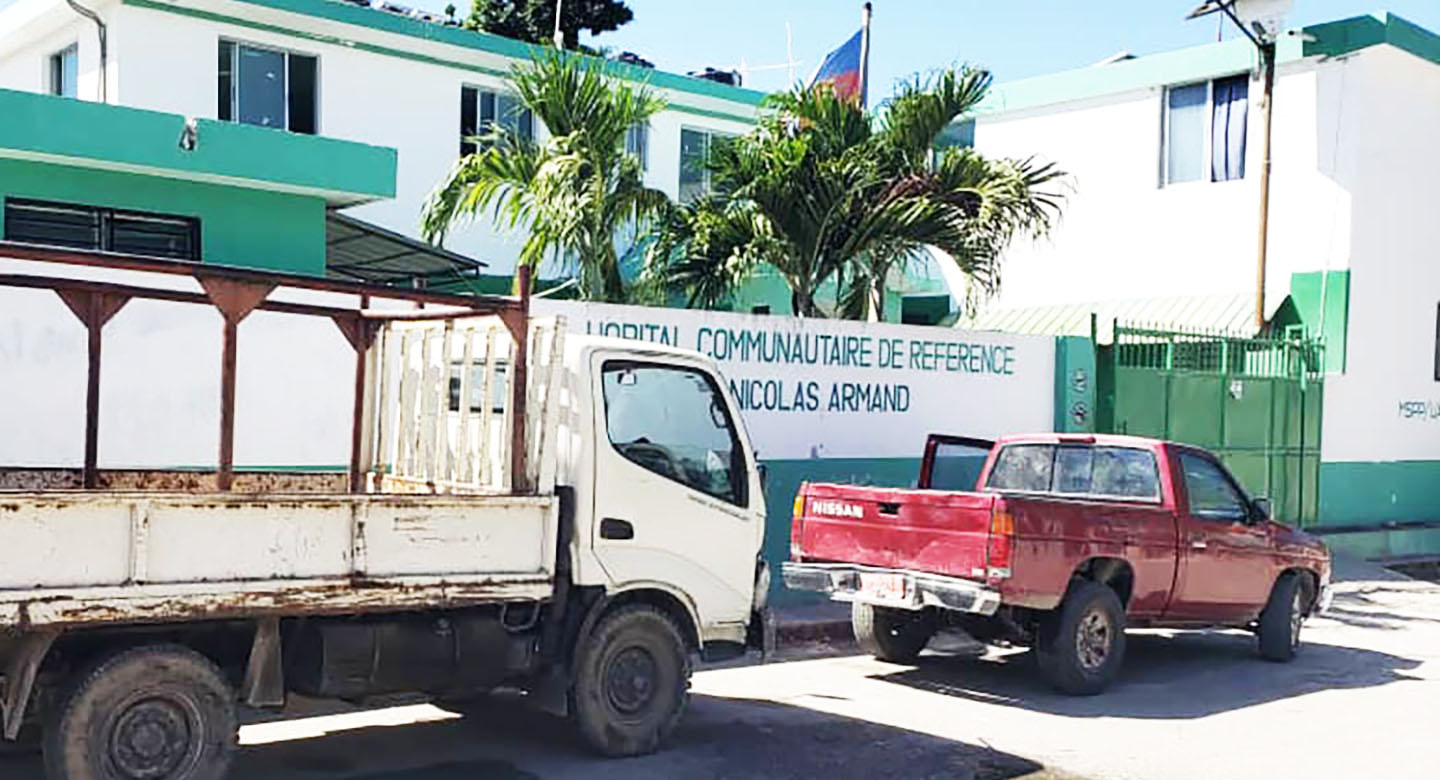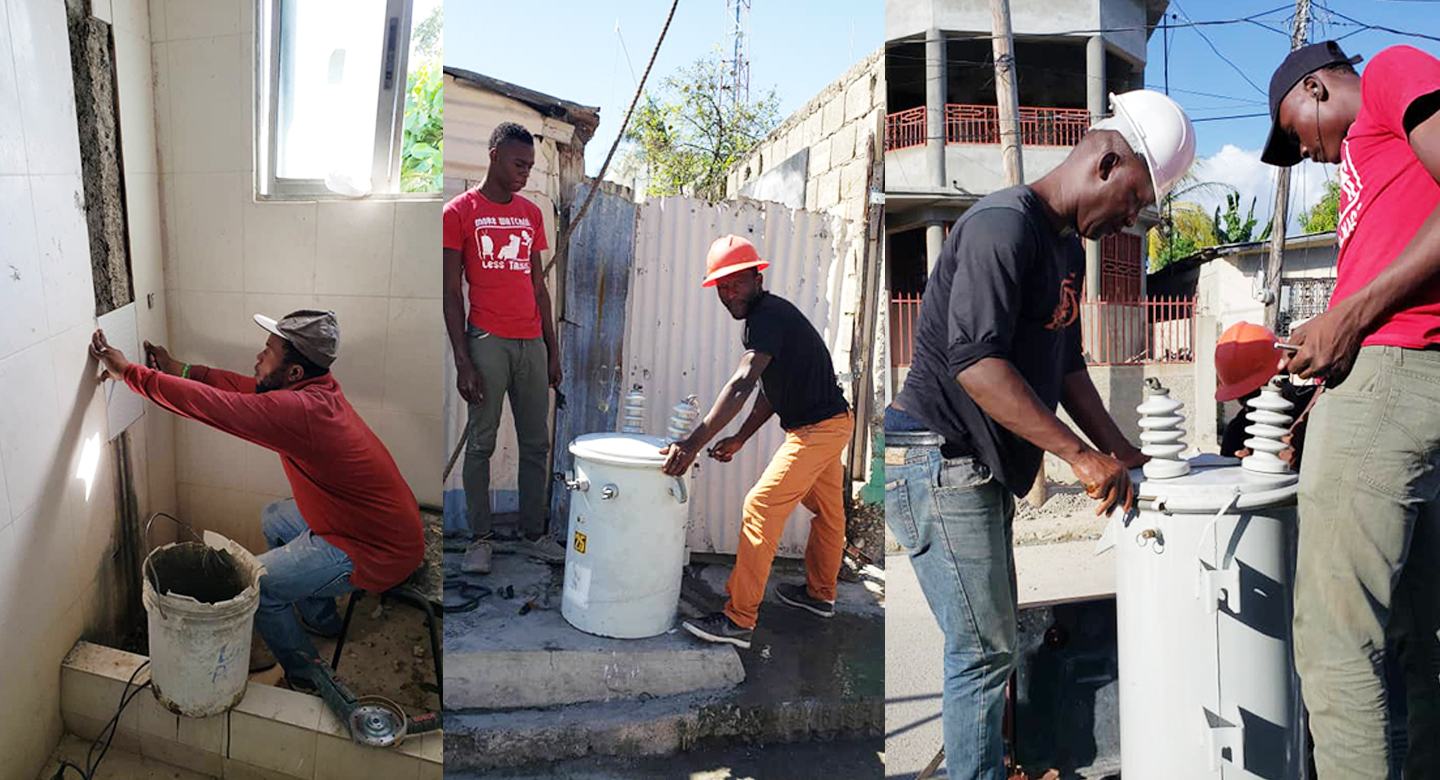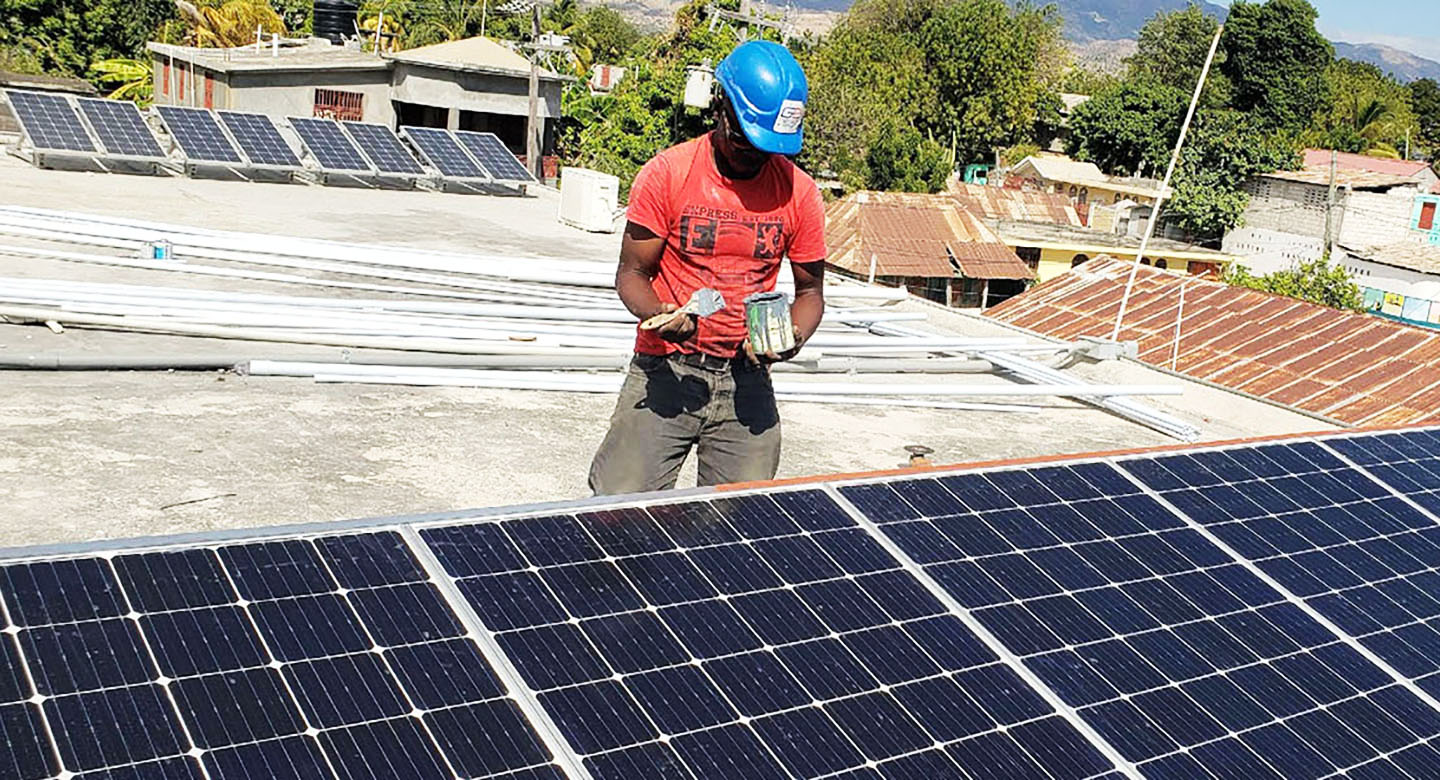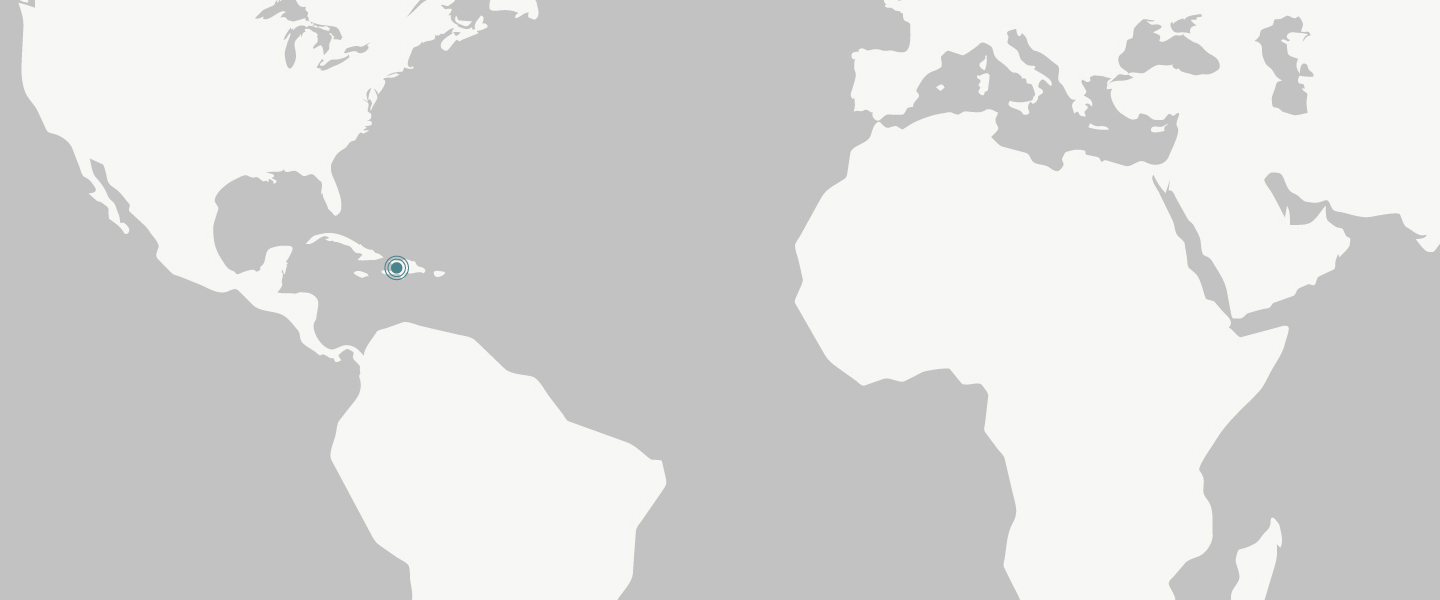


The Sustainable Village and Learning Community (SVLC), located in Arcahaie, Haiti, is committed to the four tenets of Sustainable Development; society, environment, culture, and economy. Founded by a consortium of organizations, the SVLC is an initiative looking to strengthen local systems by engaging the community as a partner during the design and implementation process. Access to healthcare services and education is a key tenet of the SVLC project. The Healthcare infrastructure of Arcahaie includes 17 institutions, including one reference community hospital, Nicolas Armand Hospital. SUNY’s initial assessment of healthcare in the region included a survey of healthcare professionals who overwhelmingly reported the need for improved healthcare infrastructure and a strengthened workforce. The healthcare workforce of Arcahaie reported a desire and need for educational access to support their clinical practices. Although initial development concepts for the SVLC master plan included an onsite Health Clinic, it was determined that the community would benefit most by strengthening its existing healthcare infrastructure and supporting it by developing health education and research programs. The first project tackled by the SVLC is to assess and improve the Nicholas Armand Hospital. The Hospital enablement project encompassed infrastructure review and upgrades to allow for the hospital to operate more efficiently and provide a higher level of care. The enablement process is step one of a larger master plan that will eventually include expanded services for the community and access to training for the staff.
Haiti MSPP (MOH)
W.K. Kellogg Foundation
Arcahaie, Haiti
February 2021
Advisory, Architecture, Implementation
Healthcare
Construction for Change, Jose Matix, Jack Manderson, MSPP Haiti, AME-SADA, SUNY Downstate, SUNY ALfred State, HDI, FHHH, PHH
Prior to the renovation, the operational costs of the facility were prohibitively high, and the hospital could not afford to keep the generator full. During the implementation phase, the team determined that the upfront costs of installing a solar system would help to offset fuel costs and keep the facility operational. The newly installed solar system is now the primary source of electricity. With less dependence on generator power, there are more funds available for healthcare services.
Our partner, Construction For Change (CFC), worked directly with a local construction supervisor, Jimmy on management tools and processes. Due to unforeseen circumstances when the CfC team needed to evacuate the site, Jimmy was able to continue to manage the project and the local team of laborers to finish the project on time, and on budget. Their oversight included training and skill-building for both the construction team and the facility maintenance team. This knowledge transfer will empower the local team to manage the upkeep of the facility and provide construction and maintenance services in the region.
The team worked with the hospital administration throughout the project to ensure the scope of work would be able to be maintained after construction. The maintenance and operational budget projections were used to ensure the administration will allocate the proper funds to maintenance services annually.
Integrate Community
Provide Access
Respect Context
Enhanced Response Capacity
Address Vulnerability
GOAL 3: Good Health and Well-being
GOAL 6: Clean Water and Sanitation
GOAL 10: Reduced Inequality
